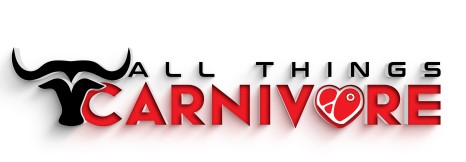Staying carnivore when traveling may seem difficult in today’s food environment but, with a bit of planning, it is totally doable even if you need to stay strict carnivore for health reasons. This post will give you some practical tips to help make the process a lot easier.
If you can’t cook and have no access to food storage facilities
If you have to travel for a few days or more, can’t cook and have no access to food storage facilities (e.g. hiking for a few days in the jungle), the best food to pack with you is definitely pemmican.
Pemmican can last for a few years and it has been used as an important survival food for long distance travel for explorers in the past. For example, when Alexander Mackenzie (1764-1820), a Scottish explorer, went on his 1793 expedition across Canada to the Pacific, he and other voyagers carried a large supply of pemmican with them.
North Pole explorer, Robert Peary (1856 – 1920), did the same thing on all three of his expeditions between 1886 to 1909 for both his men and his dogs. Peary noted the following about their daily ration:
The standard daily ration for work on the final sledge journey toward the Pole on all expeditions has been as follows: 1 lb. pemmican, 1 lb. ship’s biscuit, 4 oz. condensed milk, 1/2 oz. compressed tea, 6 oz. liquid fuel, alcohol or petroleum. A total of 2 lbs. 4½ oz. of solids per man, per day.
On this ration a man can work hard and keep in good condition in the lowest temperatures for a very long time. I believe that no other item of food, either for heat or muscle building, is needed.
The daily ration for the dogs is one pound of pemmican per day; but so hardy are these descendants of the arctic wolves that when there is a scarcity of food they can work for a long time on very little to eat. I have, however, always endeavored so to proportion provisions to the length of time in the field, that the dogs should be at least as well fed as myself.
Robert Peary
You can make pemmican very easily from just ground dry meat (beef, lamb, or pork) and tallow following these steps:
- Mix 1 lb of ground dry meat (beef, lamb, pork, chicken, fish but ruminant meet like beef, bison, deer, and elk is probably the best) and 1 lb of melted tallow in a mixing bowl
- Transfer the mixture to a baking tray, press down firmly, place the tray in the fridge for a few hours to let it set
- Once the pemmican is set, cut into serving size squares and store in an airtight container.
To make your pemmican more nutrient-dense, you can substitute dry meat with a small amount of dry beef liver. You can also add salt (1tsp) and a bit of honey (2 tbs) if you wish.
This carnivore pemmican is both nutrient-dense and calorie-dense. A two-ounce serving of pemmican has about 400-450 calories so you can easily carry a week’s worth of pemmican with you if you need too.
For example, if you need about 2000 calories a day, you will only need to take 4.5 lb of pemmican with you and can survive on just that for an entire week.
Of course, you can also take a few other foods like beef jerky, pork rind, or crispy bacon bits if you wish for variety but it is not necessary in my view. Pemmican is a nutritious complete-meal-in-a-bar and has a great fat-to-protein ratio as well.
If you don’t want to make pemmican, you can also live on shredded beef and fat chips but these are good for a few days only and not suitable for long-term survival.
The above carnivore pemmican is also suitable for those who need to be on a strict carnivore diet for health reasons.
For those who are on an animal-based diet, feel free to add honey and dried berries if you like.
I recently saw a video of American and Italian soldiers swapping their MREs and was horrified to learn what they are feeding our troops in the field. There were pizzas, crackers, peanut butter, jalapeno cashews, apple sauce, ravioli, bean and pasta soup, chicken in jelly, fruit salad, chocolate and a few other stuffs. They are not only inferior in terms of nutrition but they are also cumbersome to eat. There is so much packaging as well as heat-pack, toothbrush, toothpaste, etc that come with the MREs.
I think all they need is a few pemmican bars in their daily ration and they are set. Their health and performance would improve so much on a carnivore diet because, as Napoleon Bonaparte said, “an army marches on its stomach”. They will be nourished and they will feel satiated with stable levels of energy throughout the day. There won’t be abdominal bloating like after eating a carbs-rich meal either.
Someone at the top of the military should have learned a lesson or two from Genghis Khan who built the greatest fighting force the world has ever seen on a meat-based diet. His soldiers lived on meat jerky, dried cheese curds, and fermented mare’s milk while the enemy’s soldiers dined on grains.
If you can’t cook but have access to some storage facility
If you can’t cook but have access to some storage facility (e.g. staying in a hotel for a few days or going on a road trip and taking a cooler with you), you will have a lot more options. Below are potential foods you can consider taking with you:
- Pemmican
- Beef jerky
- Beef liver pate
- Hard cheese
- Liver sticks
- Shredded beef
- Pork crackles
- Meatloaf
- Smoked salmon
- Crispy bacon bits
- Hard boiled eggs
- Butter
- Canned meat or fish.
While you can also buy food if you are staying in a hotel or going on a road trip, I find the easiest thing to do is to take whatever you want to eat with you. This will make your travel much easier. You don’t have to wander around looking for food. You don’t need to plan ahead where you’d stop for lunch or dinner. You also won’t have any problem if the store you visit happens to run out of the items you’re looking for.
If you are healing some health conditions and must stick to a strict carnivore diet, it is also best to not take any chance and take all the food you need with you.
If you can cook
If you can cook during your travel and if you travel for more than a few days, it’d be nice to be able to eat some freshly cooked meat every day instead of relying on only non-perishable items.
In this case, I highly recommend taking a small portable cooktop and a small frying pan with you (unless you have access to cooking facilities where you stay). You can pan-fry steak with these utensils even in a small hotel room, but remember to do it in the bathroom with the fan on to avoid getting yourself into trouble.
If you can take frozen meat with you, it’d be even better because you don’t need to shop. But if you can’t do that, do some investigation beforehand to make sure that you can get what you need during your trip.
When cooking during your travel, it’s best to stay with easy and quick recipes, for example:
- Seared steak
- Fried eggs
- Meat patties
- Bacon
- Pan-fry fish
You will get all nutrients you need just by eating beef alone (our ancestors ate basically just meat of large herbivores for millions of years and they thrived, didn’t they?) so there is no need to complicate things unnecessarily. However, please make sure that you don’t eat just very lean meat and get enough fat in your diet.
If you travel with your family who are omnivores or animal-based, I highly recommend packing some frozen cooked meals with you and just reheat them when you get there. It’s just so much easier not having to go shopping and cooking everything from scratch while you are traveling. Please check out our collection of recipes for carnivore-ish meal ideas that everyone in the family can enjoy.
If you must eat out while traveling
If you must eat out at a restaurant, it is possible to order just steak or eggs cooked in butter, tallow or lard. But if you eat at food courts or takeaways that are not able to cater to your needs, the following are potential options:
- Steak without gravy
- Roasted beef, pork, or lamb
- Sashimi
- Bacon and eggs
- Sausages
- Burger patties.
However, these are only okay if you are generally healthy and can handle spices and seasonings. If you are still healing from some severe health issues and are sensitive to even a small amount of plant-based food, it’s best to stick with the food you know and always pack some pemmican with you just in case.
If you are traveling with your children who are not on the carnivore diet, I strongly recommend making their first meal of the day a really big one that is high in both protein and fat.
Unless you’ve trained them to eat steak for breakfast, bacon, eggs, and sausages are the best breakfast on-the-go for kids. This will make them feel full and satiated for the whole day. They will be less likely to crave sugar during the day and, if you have to get something less ideal later on, it’s fine to just get a small serving. Also, always pack some pemmican for snacks (get them to help make pemmican and they’ll be more willing to eat).
Conclusion
Staying carnivore while traveling is surprisingly not difficult at all with a bit of planning ahead.
In my opinion, pemmican is the best go-to food when traveling but there are a few other available options if you want to add variety. If you can cook, searing some fatty steak is the quickest and easiest option. This happens to be the choice for most long-term carnivores as well.
Other posts you might be interested in:
Is Carnivore Diet + Fruit & Honey a Good Idea?
Can You Get Fat on the Carnivore Diet?
Best Sources of Omega 3 on the Carnivore Diet
How Long Does It Take to See Results on the Carnivore Diet?
How Much Organ Meat Should You Eat on the Carnivore Diet?
Do You Need Supplements on the Carnivore Diet?
What Do Hardcore Carnivores Eat in a Day?
Disclaimer: The information in this post is for reference purposes only and is not intended to constitute or replace professional medical advice. Please consult a qualified medical professional before making any changes to your diet or lifestyle. Please check out our disclaimer for more detail.





